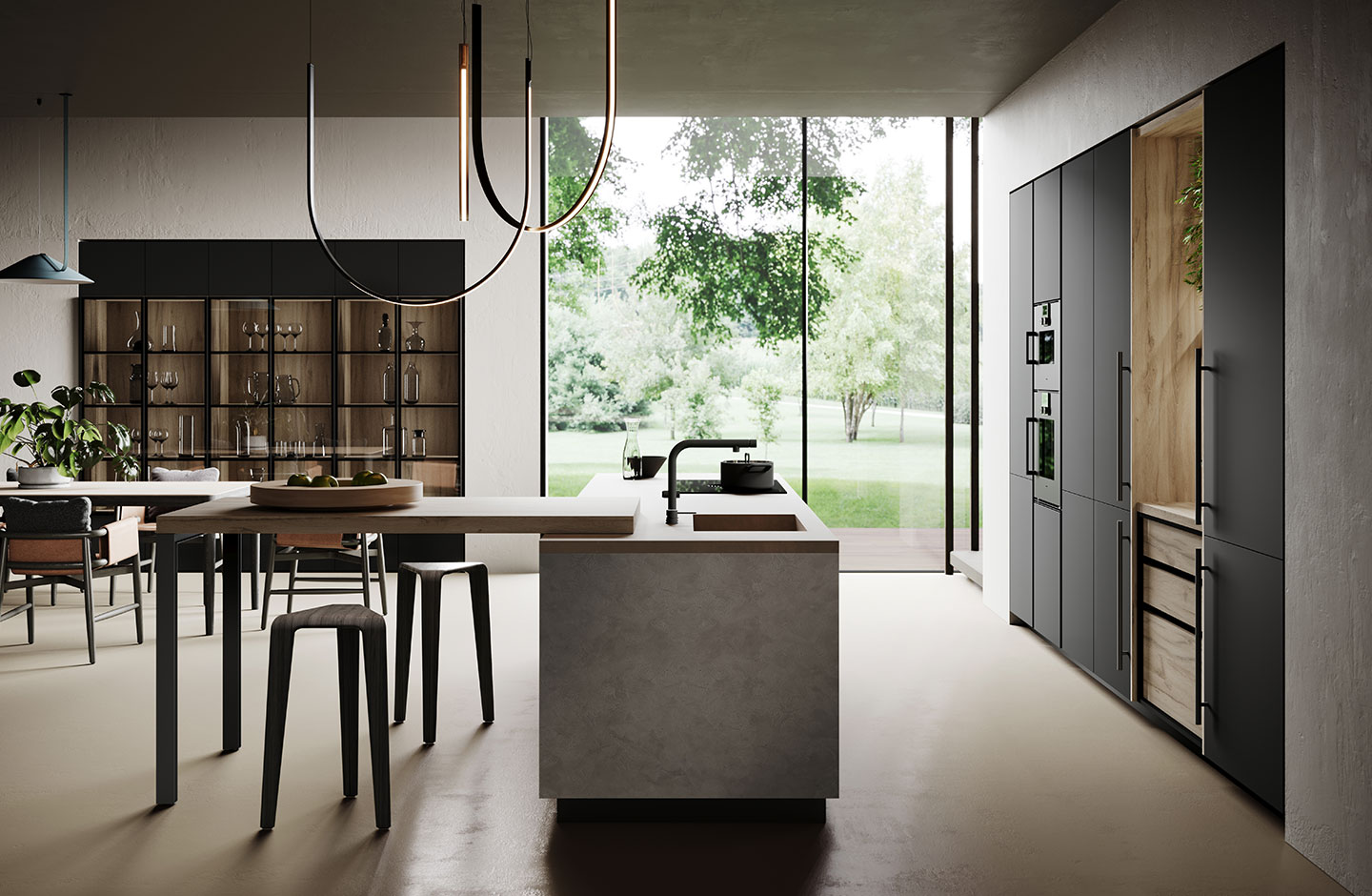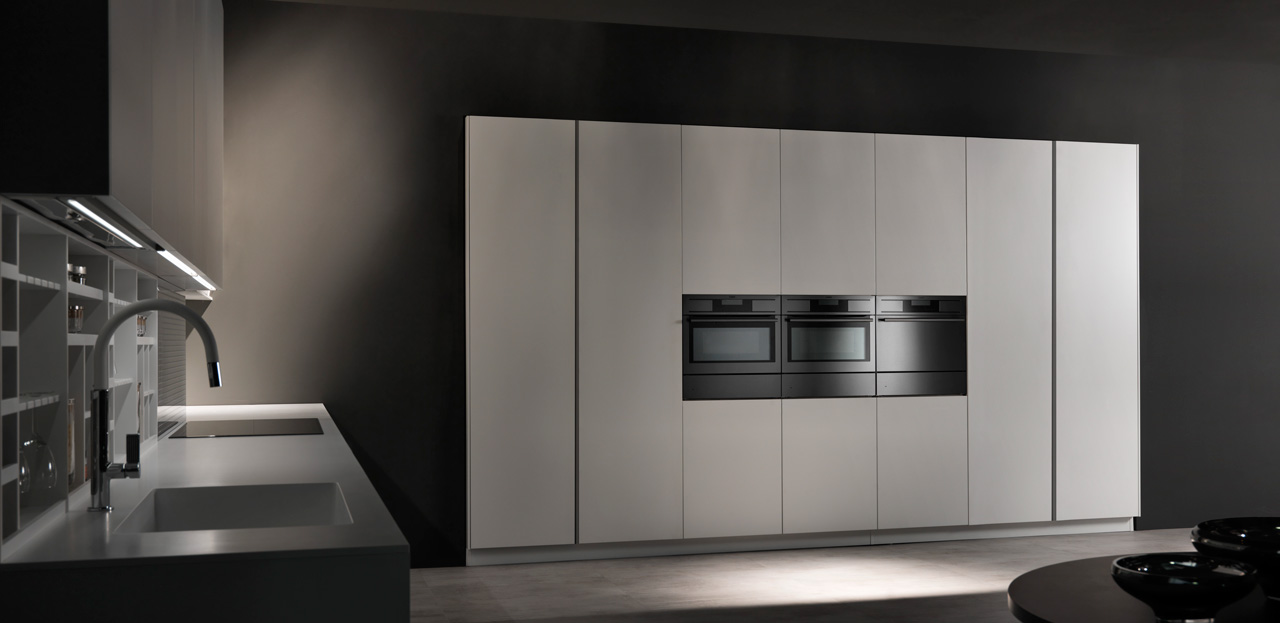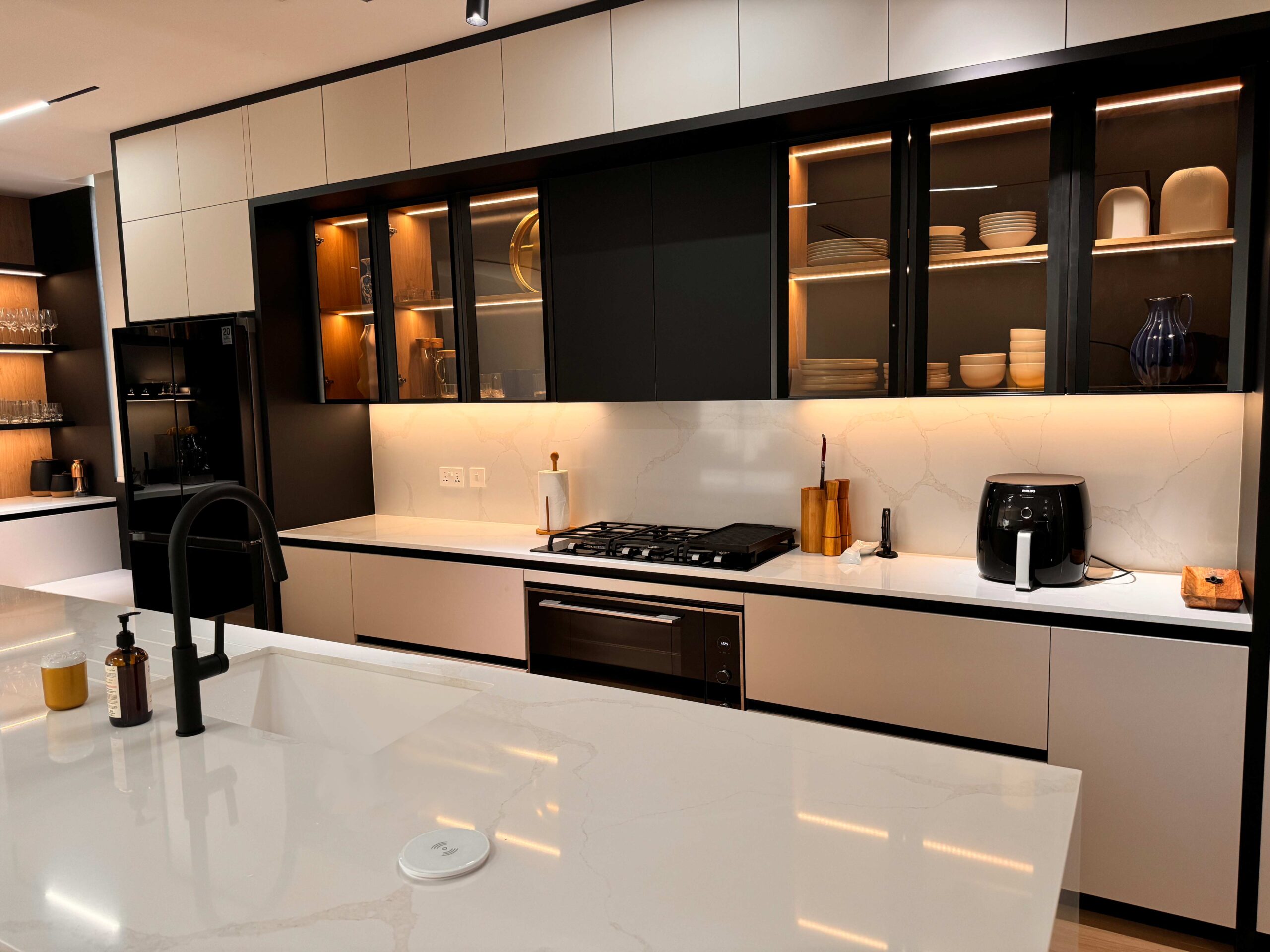How Different Colors Can Impact Mood and Appetite in Your Kitchen?
Color is a fundamental aspect of kitchen design that profoundly influences both the ambiance of the space and its impact on appetite. The color palette you choose can transform your kitchen from a mere functional area into a dynamic and inviting environment. Understanding how various colors affect mood and appetite is essential for creating a kitchen that not only meets your aesthetic desires but also enhances your culinary experience. This guide explores how different colors impact your kitchen’s atmosphere and provides tips for selecting the optimal color scheme.
Cool Colors: Calming and Refreshing
- Blue
- Mood: Blue is calming and serene, often associated with tranquility and relaxation. It can create a soothing atmosphere, making the kitchen feel more peaceful and organized.
- Appetite: Blue is known to suppress appetite, making it a less common choice for kitchens focused on stimulating hunger. It’s more suitable for creating a relaxed dining environment.
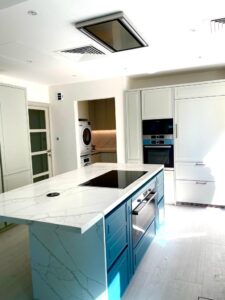
2. Green
-
- Mood: Green represents freshness and harmony, bringing a touch of nature into the kitchen. It can create a balanced and rejuvenating atmosphere.
- Appetite: Green can have a neutral to positive effect on appetite. It is associated with freshness and health, enhancing the appeal of wholesome, natural foods.

Neutral Colors: Versatile and Timelessa
- White
- Mood: White is synonymous with cleanliness, simplicity, and spaciousness. Its reflective qualities can make a kitchen appear larger and more open, creating an airy and invigorating atmosphere. This classic color choice enhances natural light and fosters a sense of purity and calm.
- Appetite: While white does not significantly alter appetite, it serves as a versatile backdrop that allows for the incorporation of colorful accents. This neutrality enables the kitchen to remain bright and welcoming, offering a canvas that complements various design elements.
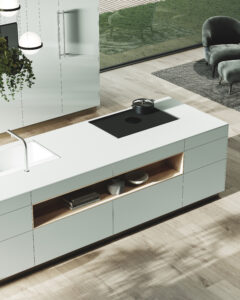
- Gray
- Mood: Gray is a sophisticated and adaptable color that conveys modernity and elegance. It creates a balanced and neutral atmosphere that integrates seamlessly with other colors, providing a versatile foundation for both contemporary and classic design styles.
- Appetite: Gray’s neutrality means it does not have a strong effect on appetite. It’s ideal for achieving a sleek, contemporary look. To counterbalance its coolness and inject warmth, consider adding vibrant accents or complementary textures.
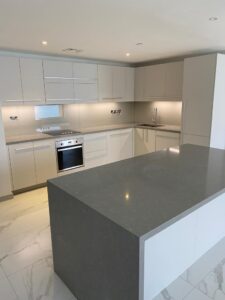
Earth Tones: Grounded and Cozy
- Brown
- Mood: Brown evokes a sense of stability, warmth, and comfort. Its earthy tones contribute to a grounded and inviting environment, adding a touch of natural elegance to the kitchen. Brown fosters a sense of coziness and reliability, making it a great choice for a nurturing space.
- Appetite: Brown enhances the visual appeal of food, creating an appetizing atmosphere. Its warm hues are effective in crafting a welcoming kitchen where meals can be enjoyed in a comforting setting.

- Beige and Taupe
- Mood: Beige and taupe are neutral, calming colors that offer warmth without overpowering the space. These shades create a soft, unobtrusive backdrop that complements a range of design elements and styles, contributing to a serene and balanced environment.
- Appetite: While beige and taupe do not directly affect appetite, their versatility provides a harmonious base that can be enhanced with colorful accents and varied textures to create a well-rounded kitchen space.
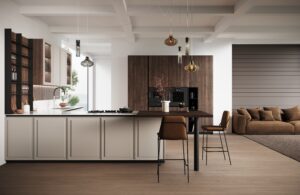
Tips for Choosing the Right Color Scheme
- Balance and Harmony
- Strategy: Achieve a balanced environment by thoughtfully combining colors. Use warm colors, such as reds and oranges, in moderation to avoid overstimulation. Integrate cool colors, like blues and greens, to establish a calming effect. Ensure that the overall color scheme supports the desired mood and functionality of the kitchen.
- Complement Your Space
- Strategy: Select a color scheme that complements the overall decor of your home to create a cohesive visual flow. Consider how the kitchen’s color palette interacts with adjacent rooms and how it contributes to the home’s aesthetic unity.
- Lighting and Size
- Strategy: The impact of color on the perception of space is influenced by lighting. Light colors, such as whites and pastels, can make a small kitchen appear more spacious and airy. Conversely, darker colors add depth and intimacy to larger kitchens. Assess the amount of natural light your kitchen receives and choose colors that enhance the space’s dimensions and ambiance.
Conclusion
Understanding the psychological and emotional effects of color can significantly influence the design of your kitchen. By selecting the appropriate color palette, you can create a kitchen that not only looks stunning but also enhances your dining experience. Whether your goal is to foster an energetic, inviting space or to establish a serene, relaxing retreat, the right color scheme plays a crucial role in achieving your vision. With thoughtful consideration of how colors impact mood and appetite, you can craft a kitchen environment that is both aesthetically pleasing and functionally effective.
Ready to transform your kitchen into a vibrant, inviting space? Discover how the perfect color scheme can enhance your cooking experience and dining pleasure with Aventini Italian Kitchen. Whether you envision a sleek modern look or a classic, timeless appeal, Aventini offers a range of exquisite color options to suit your style and needs. Start planning your dream kitchen today by exploring our curated palettes and let us help you create a space that truly reflects your personality. Contact us for personalized design advice and turn your vision into reality with Aventini.
